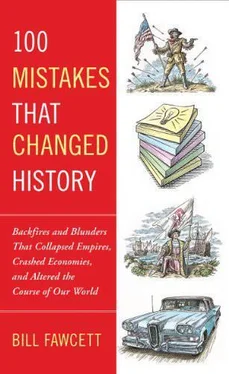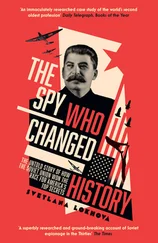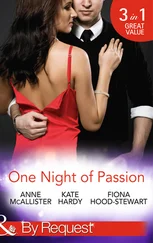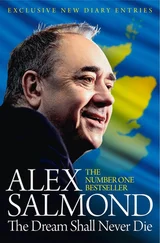They timed the release of New Coke with much fanfare and to coincide with the company’s hundredth birthday. New Coke was launched on April 23, 1985, and production of the original version was halted that same week. Sweeter and smoother, New Coke tasted much more like Pepsi than an improved version of the original Coke.
The public backlash was immediate. People began hoarding old Coke. Many likened it to trampling the American flag. Protest groups were formed, such as Old Cola Drinkers of America, which boasted more than 100,000 recruits trying to bring back old Coke. Even Coke bottlers were concerned. They wondered how to promote a drink that had always been marketed as “The Real Thing” now that it had been so dramatically changed. There was noise made that the bottlers themselves might follow consumers and boycott the product. But public protests, boycotts, and the dumping of bottles into city streets were just some of the company’s problems. Company headquarters was bombarded with more than 400,000 calls and letters. Coca-Cola hired a psychiatrist to listen in on phone calls to the hotline. The doctor reported to executives that some of the callers were so distraught over losing their beloved old Coke it was as if they were talking about the death of a family member.
On July 11, the company announced the return of old Coke to store shelves. The news was so big it made the front page of every major newspaper in the United States, and two major networks interrupted their regular programming to break the news as it occurred. Some likened it to “the second coming.” Phone calls and letters again flooded headquarters, this time expressing profound gratitude. “You would have thought we cured cancer,” one company executive said, describing the joyous response. The company president, Donald Keough, explained the entire fiasco this way: “We did not understand the deep emotions of so many of our customers for Coca-Cola.”
The crucial failing on Coca-Cola’s part was that they never asked Coke drinkers themselves if they wanted a new version of their beloved soft drink at the expense of losing the old, familiar drink. Their mistake at least changed the soda-drinking habits of millions all over the world. Coca-Cola ended the fiasco having lost several percentage points of the soda market when people, avoiding New Coke, found other flavors from other companies that they liked. That was tens of millions of shoppers putting something else in their carts all over the world.
As for the theory that Coca-Cola orchestrated a brilliant tactical move by temporarily pulling old Coke to generate overwhelming demand, Donald Keogh may have put it best: “Some critics will say Coca-Cola made a marketing mistake. Some cynics will say that we planned the whole thing. The truth is we are not that dumb, and we are not that smart.”
A Real Press Release
1989
The man most responsible for the collapse of the East German government and the reunification of Germany was a communist bureaucrat. The mistake, and the change it initiated, came in relation to the Berlin Wall. That wall had been put up to stop a hemorrhage of refugees traveling from East Germany to West Germany. The best and most-trained East Germans also had the most to gain by crossing to the West where wages were often ten times as much as in the socialist economy. First the border was closed. Most of the border between the two German states was either fenced, hard to reach, or both. So closing it was more a matter of instructing border guards than of engaging in construction. This left the anomaly of West Berlin. Sitting in the center of East Germany, the city was part of West Germany due to the agreement of the Yalta Conference between the Allies during World War II. When the rest of the border was closed, East Germans began to pour across the dividing line down the center of the city. To stop this exodus, the East German government built the notorious Berlin Wall. The wall was actually a series of obstructions and guard towers culminating in a high concrete wall or bricked windows. In the years that followed, almost 300 East Germans were killed and hundreds more wounded attempting to flee across the wall’s barbed wire and other obstructions. It became a visible symbol of Soviet repression.
By 1989, the German Democratic Republic, the most repressive of the Soviet satellites, had eased some restrictions on their people. It was a trend actually encouraged by the new Soviet prime minister, Mikhail Gorbachev. After months of unrest and riots, the East German Krenz government had agreed to allow East Germans to travel through newly independent Czechoslovakia to West Germany. Trainloads of East Germans were soon taking advantage of that liberalization. So many that they were overwhelming the few crossings used in this program.
So by November 1989, the East German Politburo and leadership had been working hard to create new regulations that eased this pressure while still maintaining a comfortable level of control. The normal communist procedure for such a relaxation of rules was to do it in small, carefully controlled steps. This ensured the government would remain in control of all aspects of whatever was liberalized and prevented a domino effect of increasing expectations and reactions from the population. Simply put, because the GDR leaders significantly held down and controlled their people, the East German government feared relaxing that control too quickly or visibly. The sure result they feared was what did happen. Once a breach in repression appeared, there was no way, short of violence, to keep it from being torn open even further. Moscow, working itself toward what a few years later was the end of communism, would neither allow nor support sending in the tanks, even though this had been a common Soviet reaction to unrest in the 1950s.
Finally, plans and regulations for lowering restrictions on all border crossings were completed late in the day on November 9. They were to begin taking effect on November 17. Just after these plans were completed, a spokesman for the Politburo, Günter Schabowski, held a televised press conference to answer questions from the Western press corps. He was handed a note that said East Germans would be allowed to cross directly into West Germany. It said that further instructions would be available the following day after the border guards could be informed of the procedures and instructions. No more details were included, since the regulations and procedures had just been finalized a few hours earlier. Schabowski read the note out to the assembled reporters, which meant he was reading it aloud on the state television network. Then an Italian journalist asked him when the regulations were to go into effect. The note seemed, incorrectly, to infer that the change was to take effect that day. All that was needed was for the guards to be informed. It said nothing about gradual change to ensure government control. The spokesman answered, “As far as I know, effective immediately, without delay.” He went on to assure the journalists, and so the German people, that the new regulations included the crossings into West Berlin.
Within minutes, the crowds near the crossing points in the Berlin Wall were flooded with cheering East Germans. The border guards, who hours earlier were sworn to shoot anyone crossing without very specific paperwork, had no idea what to do. Everyone, including many of those who had been watching television, was sure the regulations had been relaxed. Without orders, the guards kept the crossing closed peacefully the rest of that evening. But the East German government had been caught off guard. No orders were ready to instruct the border guards what to do. Finally that night, as the crowds continued to grow at one crossing after another, the guards simply opened the gates. Crowds of cheering East Germans flooded into West Berlin. Many were chanting, “Gorby, Gorby,” correctly assuming any change had to have come from the top.
Читать дальше












